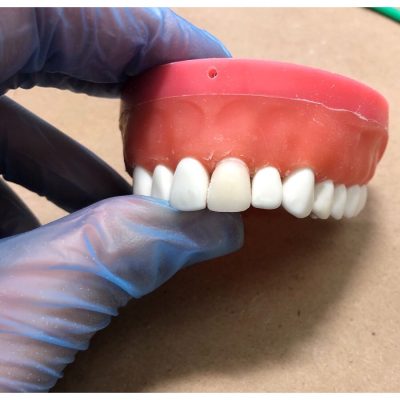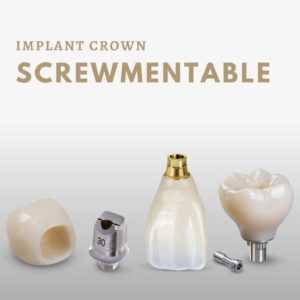Now that we’ve covered some of the basics of prepping anterior teeth for crowns, let’s review a few methods for temping the teeth while the crowns are being made by the lab:
•
1. There are multiple ways to make temps—putty matrix, vacuform suck down, prefab shells, block carving—however in this post we’ll review using a putty and vacuform matrix.
2. Either one needs to be made prior to the tooth being prepped by taking a pre-impression on your patients before doing the crown and then pouring up study models in Type 3 stone.
3. Apply a lubricant (Vaseline) to the matrix, prepped teeth, and surrounding tissues to ensure the temp doesn’t get locked on. However, on a real patient the saliva will naturally lubricate the area.
4. When mixing your acrylic it’s useful to mix until reaching a doughy consistency that can be rolled in your hand between your fingers. Then place enough in one of your matrices to fill about 1/2 of the tooth you’re looking to temp.
5. Firmly seat the matrix on the prep, allowing the acrylic to begin to set. After 1-2 minutes begin teasing the matrix on and off of the tooth to avoid the temp from locking on and into any undercuts.
6. Once set, remove the temp and begin to refine it. It helps to mark your finish line with a pencil so as to not over reduce. Using an acrylic polishing bur, remove excess material and obtain the ideal contours. Make sure to check the temp from all aspects (buccal, occlusal, lingual) to ensure the margins are sealed and the morphology is consistent with contralateral tooth.
7. After you’ve refined your temp, now it’s time to polish it up before cementing. You can either polish using wet pumice and a lathe wheel (seen here) or with your blue, brown, and green (in that order) acrylic polishing burs. Smooth the temp so as to not cause any iatrogenic damage to surrounding tissue and teeth.
8. Cement the temporary crown in using the cement of your liking, remove excess, and always check interproximal areas with floss and occlusion with articulating paper.
•
Next time you need to make a temporary crown, try out one of these methods and see how they work for you!




